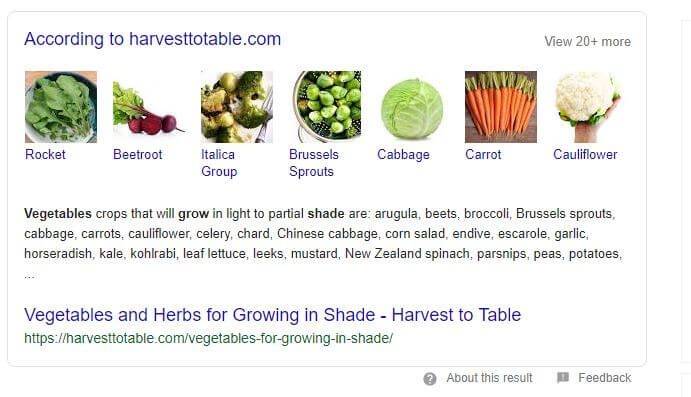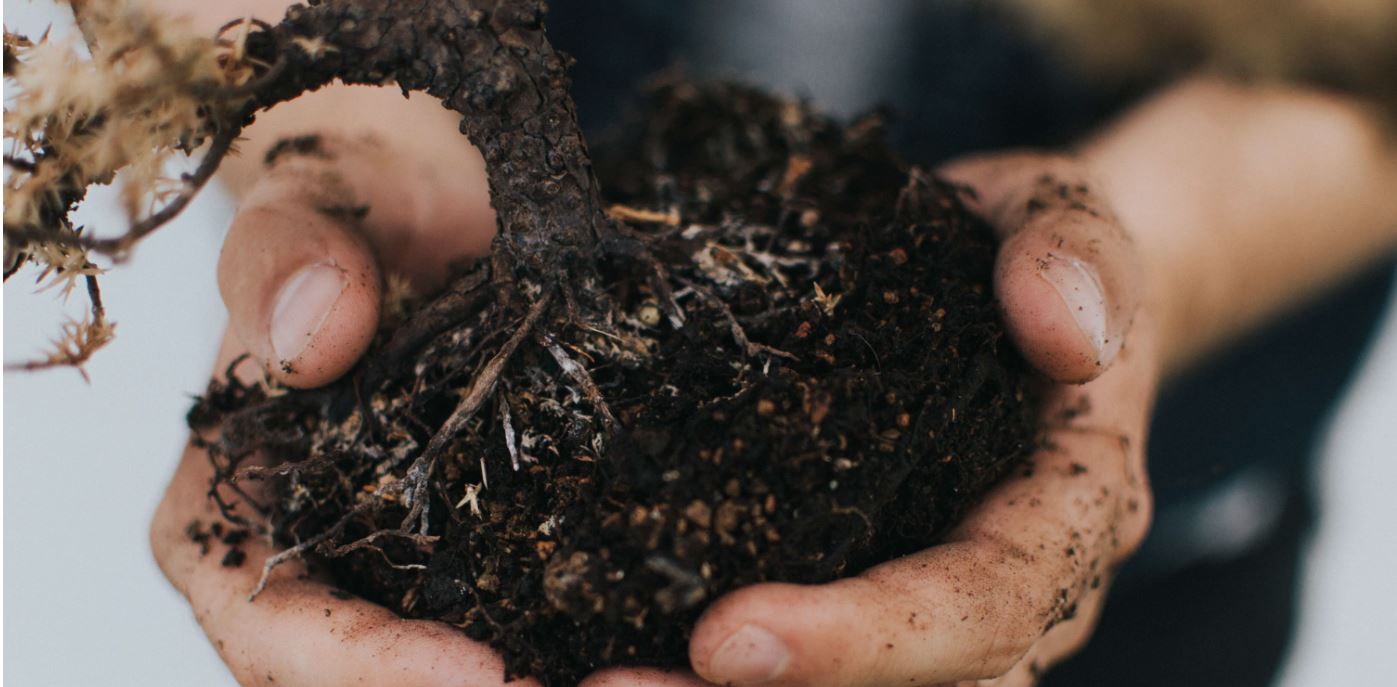
Author: Andrew Cherrie | SEO and Content Lead
“How long until we get to see some actual results?”
(Me, May 2019)
It’s a question that I’ve been asked countless times before by clients enquiring about our SEO work.
This time, though, it was me doing the asking.
I was covered in soil and sweating uncontrollably.
My wife and I had just spent an hour digging up a 2m x 1m patch of grass, filling it with 30 bags of dense soil and then dropping annoyingly tiny seeds into neat little rows.
For some reason we’d decided to assemble a couple of vegetable patches in the back garden.
After putting in all that backbreaking work, I wanted to taste the sweet, non-metaphorical fruits of our labour as soon as possible.
“At least 3 months, probably half a year. Maybe even longer.”
(My Wife, May 2019)
It wasn’t the answer I was looking for.
If you’ve ever worked with an SEO company or considered employing an agency to provide SEO services, it’s probably an answer you’re familiar with as well.
SEO results take time
🌱🌱🌱🌱🌱🌱🌱🌱🌱🌱
🥕🥒🍆🥦🌽🍅🥔🍓🍎🍒
The thought of investing all that time and effort into something and getting nothing back is pretty terrifying.
I found it helpful to make a list of all the things that needed to be done to give the seedlings the best possible chance of flourishing.
If I followed that and things didn’t work out, at least I’d know that I couldn’t possibly have done more.
It got me thinking – wouldn’t we as an agency (and our clients) benefit from something similar?
SEO explained simply
Too many agencies fluff things up with jargon and terminology, something that can intimidate clients or leave them wondering what exactly is being done to their website.
When you’re not able to guarantee results – and any agency that does so is not being 100% truthful – it becomes a lot harder to communicate the value of your services.
That’s why we’ve made this article, explaining the most important things we need to do to give your website the best possible chance of achieving organic success.
First up, though, we need to take a look at that term ‘organic’ and what it means.
What exactly is ‘organic SEO’ in digital marketing?
organic
/ɔːˈɡanɪk/
Adjective(of food or farming methods) produced or involving production without the use of chemical fertilizers, pesticides, or other artificial chemicals.
First of all, let’s be clear what we’re talking about here.
What is SEO?
SEO – or Search Engine Optimisation, as its Mum would call it when she’s angry – is defined as “the process of maximizing the number of visitors to a particular website by ensuring that the site appears high on the list of results returned by a search engine.”
We use the term ‘organic traffic’ when talking about visits to your website which come naturally through the list of search engine results as opposed to paid advertising.
There are many different search engines of course, but with Google taking about 92% of the global market share, we’re going to put our focus there.
Organic also applies to social media campaigns which don’t involve any kind of monetary push.
Sustainable organic SEO growth
In this gardening analogy we can look at paid ads as the ‘fertilizers, pesticides, or other artificial chemicals’ of the digital world.
They speed things up. If used with consideration, they can bring big yields.
They fend off any pests looking to dine out for free on your precious crops.
But they can be expensive, and are often not sustainable.
Use them carelessly and they’ll do more harm than good.
Doing things organically with SEO
organic
/ɔːˈɡanɪk/
Adjectivedenoting or characterized by a harmonious relationship between the elements of a whole
Doing things organically, on the other hand, requires time and patience.
It needs constant nurture and care, and even then there’s no guarantee of success.
Results in SEO – just like in gardening – are notoriously hard to predict, and even harder to put a timescale on.
They’re reliant on so many factors, many of which we have no control over.
SEO is unpredictable; prepare for a rainy day
🌧️🌧️🌧️
☂️☂️☂️
🌿🌿🌿
Just like an unexpected downpour can decimate your seedlings, an algorithm change can undo all of your hard-earned rankings without warning.
At the same time, we need to make sure we’re doing everything we can to achieve that harmonious relationship.
You can’t just throw all your seeds in together and wait for them to grow; just like you can’t just fill your site with content and expect it to rank.
It takes careful planning and vigilance, and a good dose of effort.
A site with solid foundations should be able to withstand those unexpected downpours.
There’s a multitude of things we need to do to make sure things grow organically.
SEO keywords in 2020 explained

Good content is still the foundation of any website which does well in the search results – the fertile soil which allows that organic traffic to grow.
It’s 2019 and we’re a very busy bunch of internet users. We want quick answers to our queries.
Google’s aim is to prioritise results which match the searcher’s intent, making easy to find what they were looking for in as few steps as possible.
We need to make sure that your site’s content is able to do this.
State your search intent
Let’s say I’m starting out on my gardening journey.
Seeing as one area of the garden doesn’t get much sun, I want to know which plants or vegetables can grow well in the shade.
I might start by searching ‘which vegetables grow in shade’.
Clearly I’m looking for information on a topic I’m not clued-up on – I want as much as I can possibly digest so I can make an informed decision.
The page which currently ranks top of the Search Engine Results Page (SERP) for this term ticks that box.
It covers the topic and provides plenty of useful information, giving me the exact answers I was looking for in a digestible format.
Most pages on the first page return similar content.

Now I’ve read the useful guides, assessed all of my options and made a decision on the types of seeds I want to sow.
I’ll probably search something like ‘buy carrot seeds’. 🥕
There’s a much clearer intent here.
The specific nature of the query tells Google that I’ve probably already done the research and am ready to make a purchase.
I don’t need any more information beyond price, reviews, and product descriptions.
That’s why the top results for this term feature transactional pages, where you’re able to browse stock and quickly make a purchase.
They’re the most useful results for the user, based on Google’s interpretation of the searcher’s intent.

Understanding the intent behind search queries is vital when we’re building content for a site.
If we were a garden retailer looking to target the above keywords, we’d need to produce content which covers all of those potential search intents.
Of course, many searches are frustratingly vague and often ambiguous.
By itself, the query ‘carrot seeds’ could be either informational or transactional.
It can be something of a guessing game.
By producing high-quality content that addresses the needs of your target customer at every stage of the buying journey, we’re able to increase the chances of significant organic traffic growth – traffic which is more likely to convert into customers.
You are what you E-A-T
Google mention the acronym E-A-T in their Search Quality Guidelines, used to assess the quality of a website.
It stands for Expertise, Authoritativeness, Trustworthiness.
Your content needs to be more engaging, more useful, and more authoritative than the content your competitors are producing in order to rank higher than them.
You need to show that your site is the most trustworthy source on the topic.
UX and SEO; where form meets function

Content covers more than just the words on the page.
It’s how those words look and interact with the visual elements around them to make the site simple to use and easy to understand.
You should be able to see exactly which path to take next.
That’s something I wish we’d thought about before planting the seeds. We didn’t follow the checklist on this one.
The content of the veg patch is now a chaotic mishmash of towering leaves and unruly stems fighting for space.
That makes it hard to see which steps need to be taken and what needs to be done next.
It doesn’t look particularly great, either.
The borders between UX and SEO are crumbling rapidly
Let’s go back to this idea that Google likes to rank sites which make it easy for us to find what we’re looking for, in as few steps as possible.
In other words:
💡 Google likes sites which provide a good User Experience (UX).
Just like my veg patches, a website can’t do what it’s supposed to do if it’s overgrown, badly arranged, and inaccessible.
It’s something we think about in detail before embarking on a web development project.
Google uses a variety of metrics to determine how good your site is at providing an agreeable User Experience; if users don’t spend much time on the page and leave it without moving elsewhere on the site, that’s a fairly strong signal that it doesn’t give them what they’re looking for.
That could also indicate that the site is poorly designed, takes too long to load, or is impossible to navigate on a mobile device.
Maybe it’s just not very nice to look at. After all:
“75% of people form their opinion about a website based on website aesthetics.” (Source: Digital Apeel)
They’re probably not even going to bother exploring the content further if the design is outdated or confusing.
The best websites – like the best gardens – find the optimal balance between beauty and functionality.
Complimenting good content by putting UX at the forefront of any web design ensures that your site stands the best chance of growing organically.
SEO backlinks explained; sending signals through the roots 🔗
I came across one fascinating article when trying to work out how to untangle the knotted mess we’d created.
It talked about the recent evidence which suggests that plants are able to send signals through their roots to help out their neighbours.

Websites do something similar.
They send signals to search engines through links on the page in order to inform them about other relevant pages.
These can be internal links – sending the user to another page on the same site – or they can be external, linking out to another website.
If your page has links to it from other relevant websites, that’s a big hint to Google that it’s authoritative and trustworthy.
The more authority your site has, the more chance it has of ranking.
“Inbound links from other websites tell Google that people trust what you have to say — enough to link to it from their own websites. Trust is huge in the eyes of Google, and the more trustworthy the source linking to you is, the greater the impact their inbound link has on your ranking.”
Sam Kusinitz, Hubspot
👉 Hubspot
By including that above link in this blog post, I’m telling Google that the Hubspot article is trustworthy.
A signal through the roots to help out a nearby plant.
So how do we build links and grow some stronger roots?

Linkbuilding is the practice of getting more inbound links in at attempt to boost the authority of a website.
It’s one of the most effective things we can do to give your site a good chance of ranking organically.
The term itself might be a bit outdated, though.
We’re better off calling it something like link earning – where we create something of so much value that it naturally picks up links from around the web.
You can’t leave your black hat on 🎩
We can also do it the ‘old-school’ way.
That tends to involve the spinning of poor content and buying of links from shady networks of websites.
It’s a well-known ‘black hat SEO’ technique.
Using these techniques can land you with a Google penalty, which can take years to recover from.
If you’re a business owner intent on building a quality, sustainable website, I wouldn’t even consider it.
“At the end of the day, content marketing remains one of the most effective (and potentially scalable) ways to earn links to support your SEO campaign. You just need to focus on one main thing…ensuring you’re adding value at all times!”
James Brockbank, Search Engine Journal
Of course, we can’t just plonk a piece of content on the web and wait for the links to roll in.
We’ll need to do some form of outreach to make relevant sites aware of our piece, or at least spread the message on social media.
If the content is good enough it will begin to earn links itself, through its sheer excellence and linkworthiness.
There really is no set formula for what makes a linkworthy piece of content.
It could be a long-form guide in a blog post like this one; it could be a short piece of revealing research displayed on a simple graph.
As long as it’s original and provides value to others, there’s a good chance it will earn links.
SEO Explained: your key takeaways
SEO is like gardening
🌱 It requires time and patience
🌱 Even then, there’s no guarantee of results
🌱 Time frames are hard to predict
🌱 When done properly, results are sustainable
🌱 The more effort you put in, the greater the rewards will be
How to give yourself the best possible chance of organic SEO growth
🌿 Produce good, useful content
🌿 Provide a good user experience
🌿 Earn links from other websites
Ready to sow the seeds of some sustainable organic growth? Read more about our SEO services and send us some signals on 01924 201711.